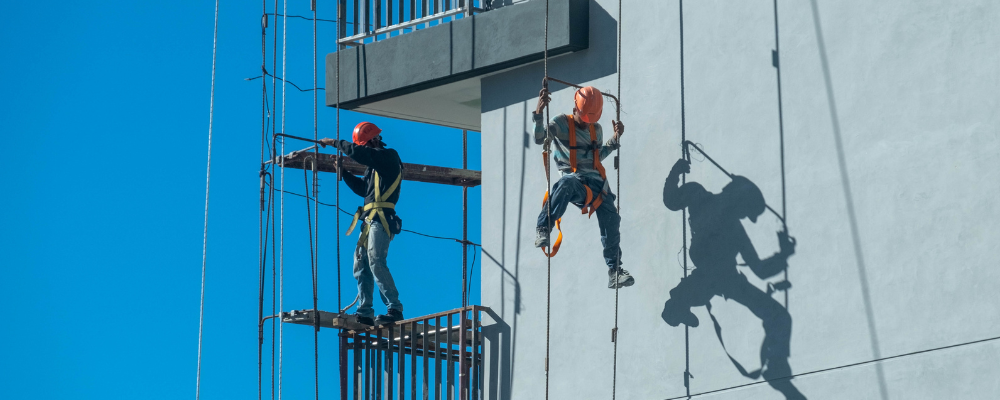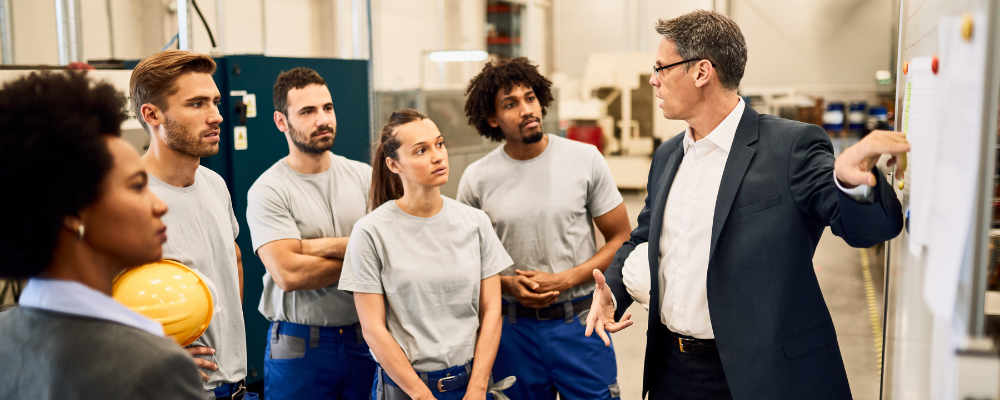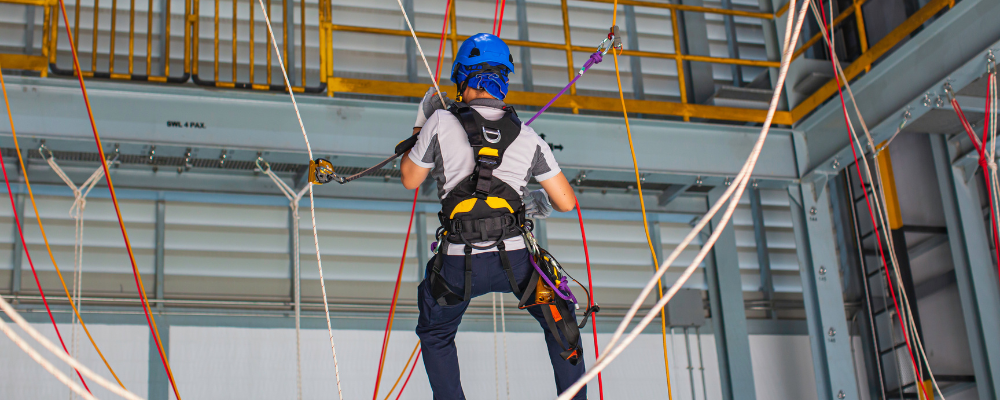
Introduction
Welcome to Site and Safety Solutions, where we prioritize the safety of construction workers above all else. In the high-risk construction world, one aspect that must be considered is fall protection. In the high-risk realm of construction work, prioritizing safety is paramount. One of the most critical aspects of construction safety is fall protection. In this blog, we will delve into the importance of fall protection for construction workers and discuss critical products such as the Cable Crossover Ring, Adjustable Lanyard, and Harness Kit. By understanding the significance of fall protection and utilizing the right equipment, we can ensure the well-being of construction workers on the job site.
Why Fall Protection Matters?
Fall protection is critical to workplace safety, particularly in the construction industry. This section explores the importance of fall protection by examining grim statistics and highlighting the legal obligations employers face in ensuring the safety of their workers.
The Grim Statistics
Construction work is synonymous with risks and dangers, and one of the most perilous hazards that workers face is the risk of falling from heights. The statistics regarding falls in the construction industry are grim and cannot be ignored.
According to data from the Occupational Safety and Health Administration (OSHA), falls from heights accounted for 33.5% of all construction fatalities 2019. This alarming statistic points to a dire need for robust fall protection measures. These falls often result in severe injuries, fatalities, lifelong disabilities for workers, not to mention the emotional and financial toll on their families.
The consequences of falls from heights extend beyond immediate physical harm. They can lead to reduced productivity, increased workers’ compensation costs, and damage to a company’s reputation. Recognizing the gravity of this issue, employers must prioritize fall protection to protect their most valuable assets: their workforce.
Legal Compliance
In addition to the moral imperative of safeguarding workers, there are legal obligations that employers must adhere to regarding fall protection. At the federal and state levels, regulatory bodies like OSHA have established stringent guidelines and standards to ensure worker safety on construction sites.
OSHA regulations require employers to provide fall protection systems that meet specific criteria when workers are exposed to fall hazards. These systems include guardrails, safety nets, and personal fall arrest systems. Employers must conduct thorough hazard assessments, implement protective measures, and train workers on fall protection procedures.
Failure to comply with these regulations can have severe consequences. Employers who neglect to provide adequate fall protection may face hefty fines, legal penalties, and even criminal charges if a worker is seriously injured or killed due to a fall. Legal consequences extend beyond financial penalties, affecting a company’s reputation and future business opportunities.
Fall protection is not merely a matter of ethics or good practice; it is a legal requirement that employers must diligently follow. The devastating statistics related to falls from heights in the construction industry underscore the urgency of implementing robust fall protection measures. Employers have a moral and legal responsibility to prioritize fall protection to safeguard their workers and ensure compliance with regulatory standards. By doing so, they not only protect lives but also protect their businesses from the potentially catastrophic consequences of non-compliance.
Understanding Fall Hazards in Construction
Construction sites are rife with potential fall hazards. The risks are omnipresent, from scaffolding and elevated work platforms to rooftops and ladders. Construction workers face daily challenges that necessitate robust fall protection measures. Among these, safeguarding the vision is a top priority.

Understanding the Importance of Training and Education
- Risk Awareness: Proper training and education empower construction workers with the knowledge needed to recognize fall hazards in their work environment. It includes identifying situations where eye protection is essential, such as when working with tools, machinery, or in areas with debris.
- Compliance: Training programs ensure that workers know and understand the relevant safety regulations and standards, such as those set by OSHA and ANSI. This knowledge fosters compliance and helps avoid costly violations.
- Injury Prevention: The primary goal of fall protection training is injury prevention. Workers well-versed in safe work practices and the correct use of protective equipment are less likely to suffer accidents and injuries on the job site.
Essential Fall Protection Products
- Cable Crossover Ring
The Cable Crossover Ring is a crucial component in a fall protection system. It provides a secure anchor point for lifelines and lanyards. This device is made from durable materials and ensures workers have a reliable connection point when working at heights. - Adjustable Lanyard
An Adjustable Lanyard is an indispensable tool for construction workers. It allows for flexibility in positioning, ensuring that workers can move freely while maintaining a secure connection to an anchor point. The adjustable feature is handy in situations where the work area may change. - Harness Kit
A Harness Kit is the cornerstone of fall protection gear. It encompasses a full-body harness, which distributes the force of a fall evenly across the body, minimizing injury risk. These kits are adjustable and contain various attachment points for lanyards and lifelines.

Proper Use and Maintenance
Ensuring the safety of construction workers when working at heights is not solely reliant on providing them with fall protection equipment; it also necessitates the correct use and diligent maintenance of this equipment. These aspects are necessary to ensure the effectiveness of the gear and, more importantly, the lives of those relying on it. This section will delve into the critical considerations of proper use and maintenance of fall protection equipment.
-
Regular Inspections:
Regular fall protection equipment inspections are imperative to identify wear, tear, or damage that may compromise its integrity. These inspections should be conducted by trained personnel at predefined intervals and following specific guidelines provided by the equipment manufacturer. Inspections encompass a thorough examination of the following:
- Webbing and Stitching: Check for fraying, cuts, or loose stitches in harnesses and lanyards. Even minor damage can weaken the equipment significantly.
- Hardware: Examine buckles, D-rings, and other connecting components for signs of deformation, corrosion, or damage. Ensure that locking mechanisms function correctly.
- Shock Absorbers: If the equipment incorporates shock-absorbing elements, inspect them for any signs of deployment or damage.
- Labels and Markings: Verify that all equipment labels, markings, and tags are legible and have not worn off. These labels often contain vital information about the equipment’s specifications and limitations.
-
Proper Fitting:
Correct fitting of fall protection equipment is paramount. Ill-fitted gear can lead to discomfort, reduced effectiveness, and even injury. Workers must be trained to properly don and adjust their equipment to ensure a snug yet comfortable fit. The fit should allow unrestricted movement while preventing excessive slack that could lead to injuries during a fall.
- Full-Body Harnesses: These should be adjusted to distribute the force of a fall evenly across the body. Straps should not be too tight or loose, and all buckles and connections must be secure.
- Lanyards and Lifelines: Ensure that lanyards and lifelines are attached securely to anchor points and provide a clear path that minimizes the risk of entanglement.
- Adjustable Components: Workers should be trained to set and secure these adjustments properly if the equipment has flexible components, like lanyards with length adjusters.
-
Appropriate Training:
Proper training is the cornerstone of fall protection. Workers must be well-versed in the safe use of fall protection equipment and the potential hazards and risks associated with working at heights. Training should include:
- Equipment Familiarity: Workers should understand the purpose and proper use of each fall protection equipment they are provided.
- Fall Prevention: Workers should be educated on strategies to prevent falls, such as proper positioning, maintaining clear work areas, and the importance of secure anchor points.
- Emergency Procedures: In the event of a fall, workers should know how to respond, including using self-rescue techniques or awaiting rescue by trained personnel.
- Regular Refresher Training: Ongoing training and refresher courses are crucial to ensure workers remain updated with best practices and equipment changes.
Fall protection equipment is only as effective as its proper use and maintenance. Regular inspections, correct fitting, and comprehensive training are essential components of a robust fall protection program. Safety should always take precedence over convenience or speed. By adhering to these principles, construction workers can perform their jobs at heights with confidence, knowing that they are equipped and trained to mitigate the risks associated with their demanding profession.
Visit our page for more products like
SRD 30′ GALVANIZED CABLE WITH SMALL HOOK
For more information, visit our website and Facebook page.
Conclusion
Construction workers put their lives on the line daily to build our world. Our responsibility is to provide them with the best fall protection equipment available. By understanding the importance of fall protection and utilizing products like the Cable Crossover Ring, Adjustable Lanyard, and Harness Kit, we can ensure the safety and well-being of those who construct the foundations of our society. Compliance with safety regulations, rigorous training, and proper equipment usage are the keys to preventing falls and saving lives on construction sites.
Site and Safety Solutions is committed to providing construction workers with the best fall protection solutions, including top-quality eye protection gear. Safety is the top priority, and together, we can build a safer and more secure future in the construction industry. Stay safe, stay protected.









